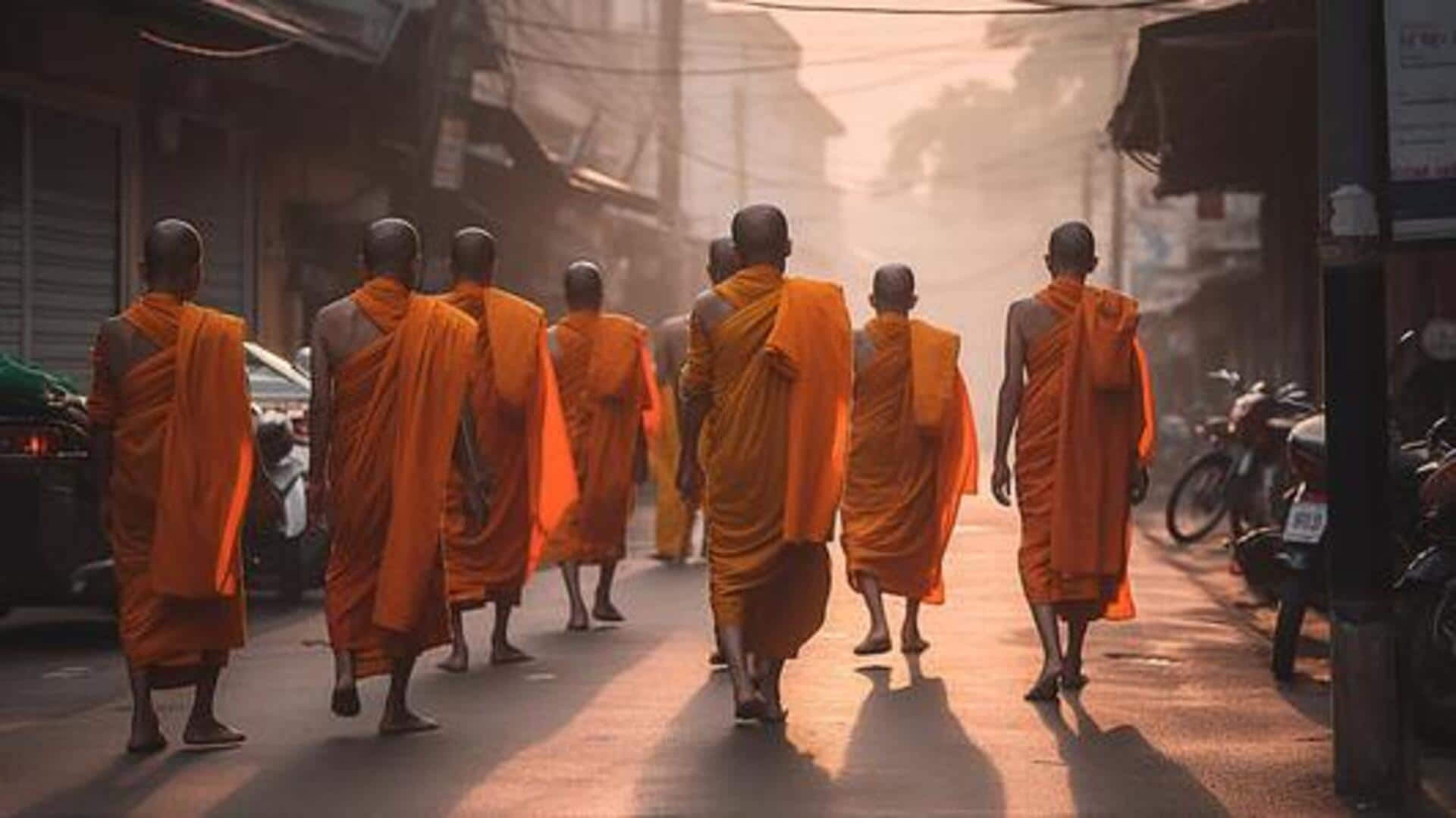
A look into monastic life in Indian and Japanese traditions
What's the story
Monastic life holds deep significance in Indian and Japanese cultures, shedding light on a world where silence speaks volumes. This article delves into the tranquil world of monks within these traditions, detailing their daily routines, spiritual practices, and the societal influence of monastic life. It provides a glimpse into the pursuit of peace and enlightenment beyond cultural boundaries.
Daily routines
The path to enlightenment
Before the break of dawn, the monks in Indian and Japanese monasteries begin their day with meditation and prayers. In India, they might also indulge in yoga to synchronize body and soul. While, the Zen monks of Japan usually practice zazen or kinhin. These early morning practices are crucial to maintain mindfulness all day.
Material minimalism
A life of simplicity
Monks in both cultures practice minimalism, seeking not material wealth but spiritual abundance. An Indian monk owns nothing but his clothes, a begging bowl, and maybe some scriptures. And, Japanese monks also live with minimal possessions. Their rooms typically contain only a futon for sleeping and a small table. Simplicity eliminates unnecessary distractions, creating an environment conducive to inner peace.
Giving back
Community service
Service to others is a key aspect of monastic life in both cultures. In India, monks frequently serve by teaching or assisting local communities. They operate schools or provide free medical clinics. In Japan, Zen monks might welcome the public to their temples for meditation sessions or join in cleaning local areas. By serving others, they view it as a part of their spiritual path, fostering compassion and humility.
Creativity as worship
The artistic expression of faith
Art holds a vital place in monastic life, acting as a pathway to devotion. Indian monks craft intricate sand mandalas and dance Bharatanatyam as offerings to the divine. In Japan, the arts of calligraphy (shodo) and gardening reflect the impermanence of life, embracing beauty in transience. These traditions underscore the deep intertwining of spirituality and art.
Mindful eating
Culinary traditions
In both traditions, food is prepared with mindfulness and consumed with a sense of gratitude. Indian monasteries typically adhere to a sattvic diet—foods that are pure, essential for health but simple—believing it fosters spiritual growth by maintaining a clear and peaceful mind. Japanese Zen monasteries practice shojin ryori—a vegetarian cuisine rooted in Buddhist philosophy emphasizing seasonal ingredients prepared with simplicity and mindfulness—to nourish both body and soul.